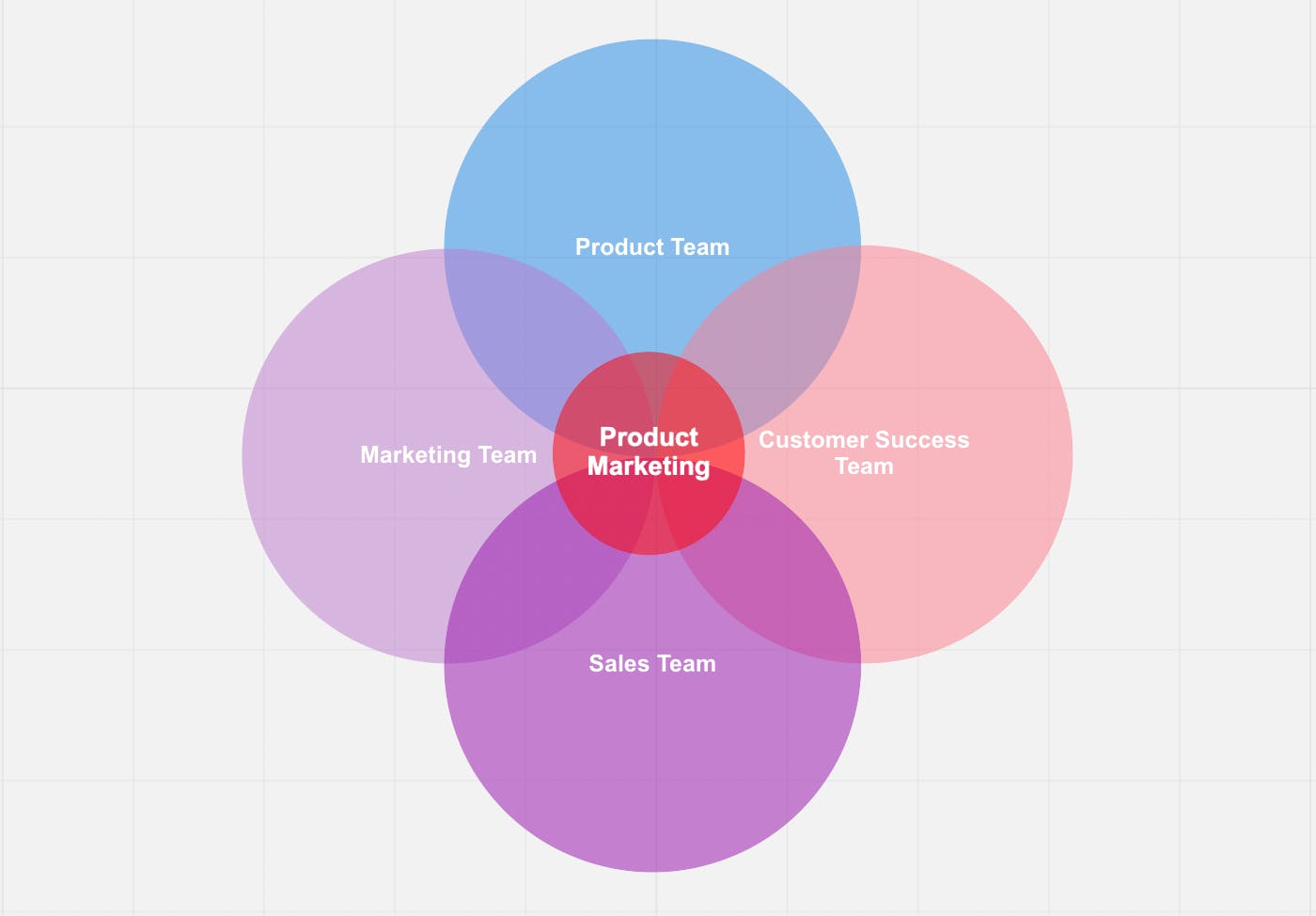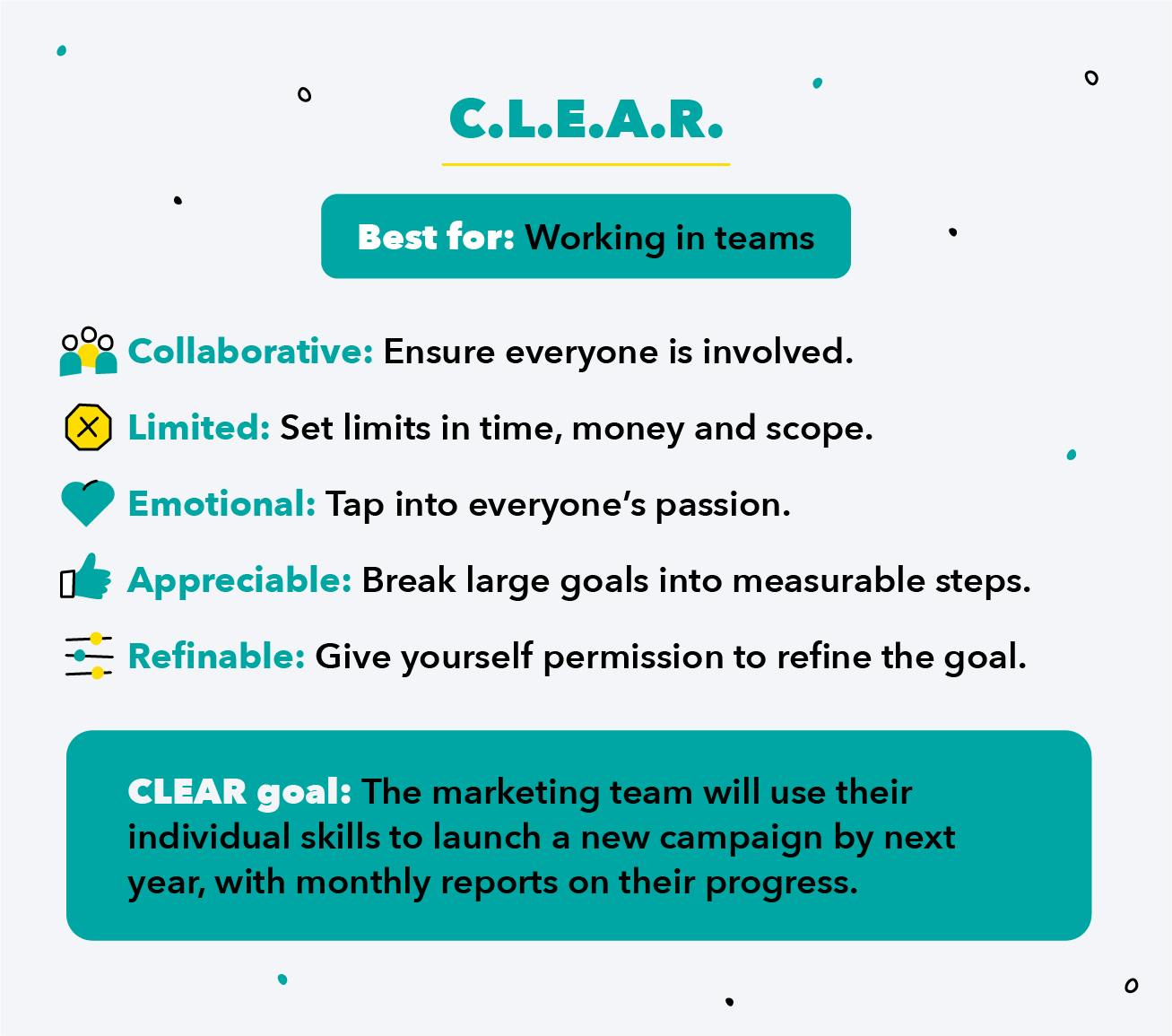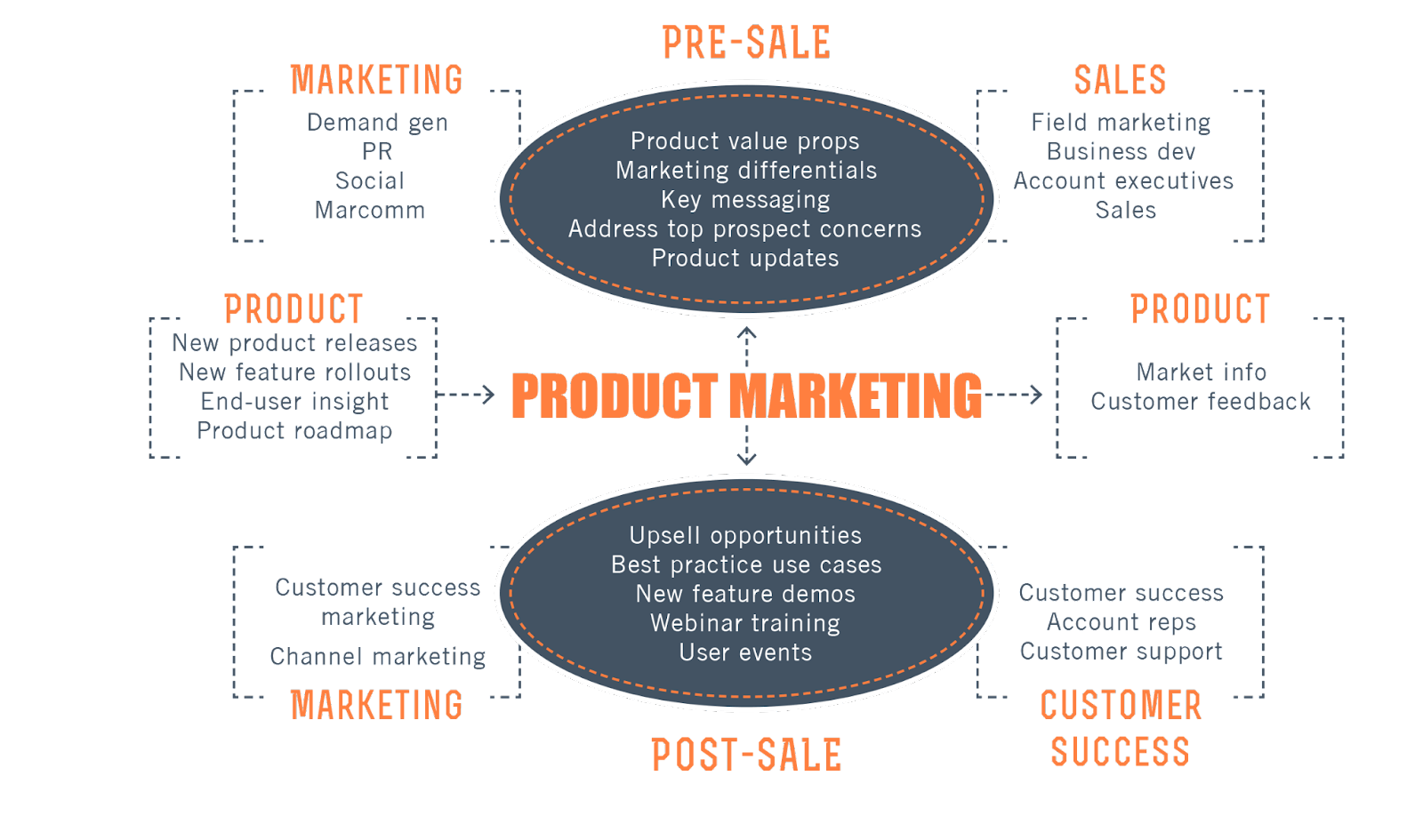How to market a product: a practical guide
Oct 12th, 2023

Contents
What is product marketing?
Preparing to market a product
11 strategies to market a product
Product marketing best practices
In today's competitive business landscape, capturing the attention of consumers and convincing them to choose your product over alternatives is no small feat. Successful product marketing requires a strategic approach combining creativity, market insight, and effective communication. With a well-executed marketing plan, businesses can generate awareness, drive sales, and build customer loyalty. This article delves into strategies and techniques that can help enterprises effectively market their products and achieve their desired outcomes.
The art of marketing a product goes beyond simply promoting its features and benefits. It involves understanding the target market, crafting a compelling brand story, and leveraging various marketing channels to reach potential customers. From conducting thorough primary market research and identifying customer needs to developing a strong value proposition and executing targeted campaigns, every step plays a crucial role in the product's success.
What is product marketing?
Product marketing is a process of promoting and positioning a specific product or service in the market to attract and engage customers. One of the primary objectives of product marketing is to drive product adoption and sales. Marketers work closely with product development teams to understand the product’s characteristics, advantages, and target audience. By understanding the market landscape and rivals’ offerings, they can highlight the unique product’s features and benefits, emphasizing its value and relevance to potential customers.
Product marketers collaborate with other marketing teams, such as advertising and sales, to ensure consistent communication across different channels. They analyze market trends, customer behavior, and competitive pricing to determine the optimal strategy that balances profitability and customer demand. Product marketers also collaborate with product managers and sales teams to develop product bundles, discounts, or promotional offers to enhance the product's attractiveness to customers.

Overall, product marketing is a multifaceted approach that combines market research, strategic planning, and communication to drive a product’s success in the market. It acts as a bridge between product development and the target audience, translating the product’s features and benefits into compelling messaging. Product marketing enables companies to position their offerings, gain a competitive edge, and achieve business objectives such as revenue growth and customer acquisition.
Preparing to market a product
Now, we will describe some preparatory steps a business owner should take to ensure that product marketing will succeed.
Set clear goals
Before developing a product marketing strategy, you need to consider your goals. Besides driving sales, your objectives may include improving consumer engagement or entering a new market. If you identify the goals, you can create a clear strategy to promote your product.
Many companies use goal-setting frameworks to establish relevant and timely objectives. The most popular approaches are CLEAR, SMART, and OKR. The CLEAR acronym stands for collaborative, limited, emotional, appreciable, and refinable. It is a strategy that combines rational and emotional reasoning. The framework emphasizes emotionally involving people in their work and acknowledging the team’s capacity to achieve outstanding results.

SMART is an abbreviation for specific, measurable, achievable, relevant, and time-bound. By applying these criteria to your goal, you can get rid of assumptions and generalizations, establish a timeline, monitor progress, and identify missed deadlines.
Finally, OKR, which means objectives and key results, is a management framework for setting organizational, team, and individual goals. The approach comprises substantial, specific, and clearly stated objectives and three to five key outcomes, which are quantitative success indicators used to track the achievement of the goals. Key results should be measurable so planners and decision-makers may assess the performance of individuals involved in the execution of the plan.
Understand your audience
One of the conditions for successful product marketing is understanding your target audience. Thus, you need to conduct market research to learn more about your ideal buyers. Examine your customers’ demographic characteristics like age, gender, and lifestyle and analyze their needs, challenges, and pain points. Consider the channels and sources consumers use to find answers to their questions.
Think about the problem your product solves for the consumers. To succeed, your product should address a need, which also implies there must be some demand for it. If you can’t name even one problem that your product solves, this can be a sign that you are trying to address an issue that doesn’t exist.
Then, you can create a buyer persona, which is a description of a person who represents your target audience and embodies its characteristics. Once you identify your audience, you can start planning a marketing strategy.
Know your competitors
Competitive analysis is an essential component of every marketing strategy. To define your unique selling proposition, you need to determine which products are popular in the market and what is their secret of success. If you find a business that is similar to yours, you should understand what differentiates your product from rivals’ offerings.
First, identify the three closest competitors and analyze their current offerings, pricing strategies, and market share. Examine their website and pay attention to the product’s features and documentation. Watch the product-related videos uploaded by bloggers, users, and influencers. In these videos, people often talk about the product’s best features and bring up issues they had while using it. To get honest consumer feedback, use websites like CNET, Google My Business, Capterra, TrustPilot, and others.
Knowing your competition enables you to identify the issues consumers in your target market are experiencing and improve your products’ features accordingly. Focus on features that can help you stand out from the competition. If your audience appreciates unique and personalized products, consider providing such offerings instead of competing on price.
Ensure you have a broad marketing mix
A broad marketing mix refers to the strategic combination of various marketing elements and tactics a company utilizes to promote its products or services and achieve its overall business goals. These marketing elements typically include a range of channels and approaches, such as advertising, public relations, direct marketing, social media marketing, content marketing, and more. The purpose of employing a broad marketing mix is to reach a wider audience, cater to diverse customer segments, and establish a strong brand identity.
A diverse marketing mix ensures that a company reaches its target audience through multiple channels, increasing its chances of engagement and conversion. Furthermore, a broad marketing mix safeguards against the risks associated with over-reliance on a single marketing strategy. For instance, if one channel experiences a decline in effectiveness, other channels can pick up the slack, ensuring a steady flow of leads and sales.
Understand your product
It's essential to not only study your target audience but also have a thorough knowledge of your product. You need to understand how it works, how much it costs, what challenges it addresses, what advantages it offers consumers, and what differentiates it from competitors. Once you answer these questions, you can determine the value proposition that will serve as the unifying theme of all your marketing materials.
Use the benefits of your product as the selling point in your advertisements to explain to consumers why they should choose it over other offerings. For example, if your product has a feature that distinguishes it from the other alternatives, emphasize it in the product name, descriptions, and advertisements.
Let's explore practical marketing strategies that can be utilized to promote a product effectively.
11 strategies to market a product
Here, we will describe the best strategies to promote a product that will work for digital products and services.
1. Create and optimize a website
Creating and optimizing a website is vital to any effective product marketing strategy. The website serves as the virtual storefront for a brand, acting as the primary point of contact between the company and its potential customers. In the development phase, careful attention must be paid to design, functionality, and user experience. A visually appealing and intuitive layout helps capture visitors' attention, while seamless navigation and clear calls-to-action guide them through the conversion funnel.
Regularly monitoring website analytics provides valuable insights into user behavior, enabling marketers to identify pain points and areas for improvement. Utilizing SEO techniques ensures the website ranks higher in search engine results, increasing organic traffic and visibility.
Additionally, investing in targeted online advertising campaigns, such as pay-per-click and display ads, can drive qualified traffic to the website. Continuously updating and refreshing content, particularly product information, testimonials, and customer reviews, keeps the website relevant and engaging.
2. Run digital advertisements
You can promote your product using digital advertisements on platforms like Google Ads, Facebook, Instagram, and YouTube. Engaging and visually appealing ad creatives are crucial to capture users' attention and encourage them to take action. Incorporating compelling copy, eye-catching visuals, and clear call-to-action buttons will entice potential customers to learn more about the offering or make a purchase.
A successful digital advertising campaign relies on targeting the right audience and delivering the right message at the right time. To achieve this, businesses can employ techniques such as retargeting, where ads are shown to users who have already demonstrated interest in the product but have yet to complete a desired action, like making a purchase. Running sponsored posts or paid advertisements can increase reach and drive traffic to the product's website or landing page.
3. Promote your product through social media
Social media is one of the most useful digital marketing tools, which is also user-friendly for beginners and free to use. According to statistics, more than half of the world's population actively uses social media. Therefore, social media platforms are perfect for selling your product and attracting your audience.
To get started, you should identify social media platforms that are popular among your target audience. Most companies use Facebook, YouTube, Instagram, or TikTok to promote their products. However, it greatly depends on your target demographics and customers’ interests.
Facebook is a platform where people often look for business updates, reviews, and product descriptions. You can host Facebook Live events to engage people, tell them about your offering, and share tutorials. YouTube is a platform where you can show how your products work, describe their benefits, and explain how to use them. Instagram allows businesses to share inspirational, educational, or other visually appealing content. Using TikTok, you can demonstrate your product, its production process, and the people behind the brand.
In addition, you can encourage customers to share user-generated content through contests, giveaways, or branded hashtags. With social media platforms, you can create surveys, post behind-the-scenes photos, answer questions, and interact with users more personally.
4. Collaborate with influencers
Finding the right influencers to represent your brand is a great way to increase the company’s discoverability and drive sales. In the beginning, you can partner with micro-influencers who have from 2,000 to 50,000 followers. Despite the small audiences, their subscribers are more loyal and tend to trust the influencer's product recommendations more than online reviews.
To find micro-influencers you want to work with, you need to search for hashtags related to your brand and product on social media. Pay attention to people who already advertise products like yours. Moreover, engaging an influencer popular among your target market within your niche can be a marketing victory when it comes to promoting your product.
You can also work with brand ambassadors who promote and represent a brand both online and offline. They collaborate with a brand over a longer time compared to influencers and advertise products in exchange for free merchandise. However, they might also be paid on an hourly or monthly basis. In addition, you can provide them access to an affiliate network, where they can earn a commission from the sales of the product they're advertising.
5. Produce relevant content
To create valuable and informative content, you must understand your target audience’s interests, pain points, and preferences. Text-based content such as blog posts, articles, and social media captions can provide in-depth information about the product's features, benefits, and use cases.
Video content is a compelling and engaging way to present a product. Product demos, explainer videos, and customer testimonials can captivate the audience and effectively communicate the product's value. Platforms like YouTube and TikTok provide vast opportunities for video content promotion, enabling businesses to tap into large and diverse user bases.
Additionally, podcasts have become increasingly popular, providing a unique avenue for product marketing. Creating podcasts related to the industry, discussing product use cases, or hosting interviews with industry experts can position the brand as an authoritative figure while subtly promoting the product.
6. Build a subscription model
You can offer different subscription tiers with varying access levels, features, or benefits. Providing a free trial period or a low-cost entry-level subscription can entice potential customers to try the product before committing to a higher-tier subscription. Offering exclusive content, early access to updates, or personalized customer support to higher-tier subscribers can incentivize them to upgrade and stay loyal to your brand.

Furthermore, to effectively market the subscription model, businesses should leverage various digital marketing channels. Email marketing can be used to nurture leads and encourage them to sign up for a subscription. Utilizing social media platforms to showcase the value of the digital product and highlight the benefits of subscribing can attract a broader audience. Collaborating with influencers or industry experts to promote the subscription can also enhance credibility and widen the product's reach.
7. Use email marketing
Email marketing is an effective tactic to include in your product marketing strategy. It offers an excellent opportunity to reengage both existing and potential customers. To encourage people to subscribe to your email list when they visit your website, consider implementing a pop-up that presents an enticing offer.
This could be something like a 10% discount on the first order or free shipping. By providing this promotion, not only will you be able to communicate with customers via email, but they'll also be more motivated to make a purchase. Moreover, emails are a perfect way to promote holiday discounts, exclusive offers, or ongoing sales on your website. Remember to include visuals and bold tests encouraging people to visit your landing page.
The other way to promote products through email is by regularly sending newsletters to your subscribers. Newsletters typically provide updates and inspirational or educational content to the readers. Tailor the frequency of sending newsletters to suit your customer base, whether weekly, monthly, or quarterly. Craft attention-grabbing headlines that offer a glimpse of the email's content and focus on creating high-quality texts that your subscribers will appreciate and anticipate receiving.
8. Promote a product through your blog
When starting a blog, creating informative content that provides value to your readers is essential. First, tailor your blog posts to address your audience’s needs and interests. Integrate the product naturally into your content by writing product reviews and tutorials or sharing personal experiences with it. Remember to be authentic and transparent in your promotion, as readers appreciate genuine recommendations.
Apart from content creation, leverage the power of social media to increase your blog's reach. Share your blog posts on various platforms and engage with your followers.
Consistency is key. Regularly update your blog with fresh content and track the performance of your promotional efforts through analytics. With dedication and strategic planning, promoting a product through your blog can significantly increase brand visibility and drive sales.
9. Share customer reviews and testimonials
Collect customer feedback through follow-up emails, surveys, or social media interactions. Once you have a collection of positive reviews, showcase them on your website and product pages. Highlight the most compelling testimonials demonstrating the product's benefits and how it has solved real-life customer problems.
In addition, use the reach of social media to share customer reviews and testimonials. Create visually appealing graphics featuring snippets of reviews and pair them with images or videos related to the product. Encourage satisfied customers to share their experiences on their social media accounts and consider running a hashtag campaign to aggregate user-generated content.
10. Create a customer loyalty program
Start by defining clear and achievable goals for your loyalty program. Decide on the types of rewards you want to offer, such as discounts, exclusive access to products or services, or points-based systems. Tailor the rewards to match your target audience's preferences and buying behavior. For instance, if you have a tech-savvy customer base, consider implementing a loyalty program that allows them to track their points and rewards through a mobile app or website.
Then, clearly communicate the benefits of joining the program and how customers can earn rewards. To encourage sign-ups, consider offering new members a special bonus or discount. Additionally, foster engagement and interaction with your brand by sending personalized messages and offers based on customers' past purchases or preferences.
11. Partner with complementary businesses
Collaborations and joint ventures are powerful marketing strategies that involve partnering with other businesses or creators in your industry to mutually promote each other's digital products. The key idea behind this approach is to tap into each other's existing customer base and reach new audiences with a shared interest in related products or services.
To execute this strategy effectively, identify complementary businesses whose offerings align well with your digital product. Determine how you'll cross-promote each other's digital products, whether through joint marketing campaigns, guest blogging, social media shoutouts, or co-hosted webinars or events. The partnership should be authentic and add value to both groups of customers, so ensure that the products complement each other and cater to similar target audiences.
Effectively marketing a product involves a combination of strategies, such as content creation, social media engagement, SEO, and collaborations with other businesses and influencers. By leveraging these tactics, brands can reach their target audience, build trust, and drive product sales, ensuring long-term success in the digital marketplace.

Product marketing best practices
Successful product marketing is a pivotal aspect of any business strategy, driving customer engagement, brand recognition, and revenue growth. In the previous sections, we explored various approaches to market a product. Now, we will provide three best practices that form the cornerstone of product marketing.
Engaging the right team. Having the right team in place is crucial for effective product marketing. Gather a diverse and skilled team with expertise in various areas, such as marketing, content creation, design, and analytics. Each team member should understand the product's unique value proposition and be passionate about its success. Collaborative efforts and communication are vital to ensure everyone is aligned with the marketing goals and strategies.
Planning and analyzing the results. Before launching any marketing campaign, thorough planning is essential. Define clear objectives, target audience, messaging, and channels. Create a detailed timeline and allocate resources effectively to execute the strategies efficiently. As the campaigns run, closely monitor and measure key performance indicators to evaluate their results.
Iterating for improvement. Based on the data collected from previous campaigns, experiment with new ideas and approaches. Test different marketing tactics and adapt your strategies to align with market trends and customer feedback. Embrace a culture of learning and improvement within the team, encouraging creativity and innovation.
Incorporating these strategies and best practices into a comprehensive marketing plan empowers businesses to navigate the competitive digital landscape and build a strong presence for their product. By constantly innovating, refining strategies, and putting the customer at the heart of every marketing endeavor, businesses can establish long-lasting success and foster meaningful connections with their audience.
